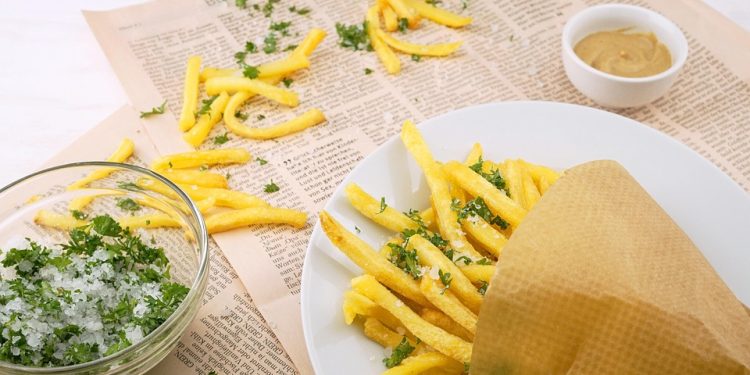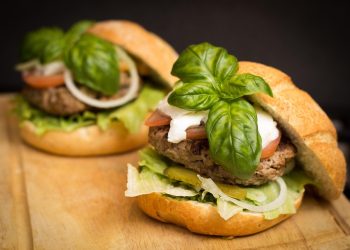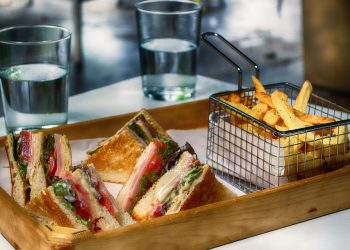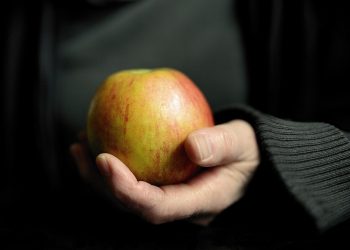7 Delicious Intermittent Fasting Meal Prep Ideas
Intermittent fasting (IF) has gained significant popularity as a weight management and health-promoting strategy. But sticking to an IF schedule can be challenging without proper planning. Meal prepping is your secret weapon! By preparing your meals in advance, you can ensure you have nutritious and satisfying options readily available during your eating window, making it easier to resist unhealthy temptations and stay on track with your goals. This article explores seven delicious and practical intermittent fasting meal prep ideas to simplify your IF journey.
Understanding Intermittent Fasting and Meal Prep
Before diving into the recipes, let’s briefly understand the basics of intermittent fasting and why meal prepping is so beneficial.
Intermittent Fasting: IF involves cycling between periods of eating and voluntary fasting on a regular schedule. Common methods include:
- 16/8 Method: Fasting for 16 hours and eating within an 8-hour window.
- 5:2 Diet: Eating normally for five days of the week and restricting calorie intake (around 500-600 calories) on two non-consecutive days.
- Eat-Stop-Eat: Fasting for 24 hours once or twice a week.
Why Meal Prep for Intermittent Fasting?
- Time Savings: Reduces the time spent cooking during your eating window.
- Improved Diet Quality: Allows you to control ingredients and portion sizes.
- Reduced Stress: Eliminates the last-minute scramble for food when you’re hungry.
- Better Adherence: Makes it easier to stick to your IF schedule and dietary goals.
Meal Prep Ideas for Your Eating Window
Here are seven delicious and easy-to-prepare meal prep ideas, perfect for fueling your body during your eating window.
1. Mediterranean Quinoa Bowls
This vibrant and flavorful bowl is packed with protein, healthy fats, and fiber. Quinoa provides sustained energy, while the Mediterranean ingredients offer a boost of nutrients and antioxidants.
Ingredients:
- Quinoa
- Cucumber, diced
- Tomatoes, diced
- Red onion, thinly sliced
- Kalamata olives, halved
- Feta cheese, crumbled
- Grilled chicken or chickpeas (for protein)
- Olive oil, lemon juice, oregano, salt, and pepper (for dressing)
Instructions:
- Cook quinoa according to package directions.
- Prepare the vegetables and protein. Grill chicken or roast chickpeas.
- Combine all ingredients in a bowl.
- Whisk together olive oil, lemon juice, oregano, salt, and pepper for the dressing.
- Drizzle dressing over the bowl and toss gently.
- Divide into meal prep containers and refrigerate for up to 4 days.
Nutritional Benefits: High in protein, fiber, healthy fats, and vitamins. This is a great intermittent fasting meal prep idea for anyone looking to increase their intake of nutrients and stay full for longer.
2. Chicken and Vegetable Stir-Fry
A classic and customizable meal prep option that’s both healthy and satisfying. You can use your favorite vegetables and protein source to create a stir-fry that fits your taste preferences.
Ingredients:
- Chicken breast, cubed
- Broccoli florets
- Bell peppers, sliced
- Carrots, sliced
- Snap peas
- Soy sauce (low sodium)
- Ginger, minced
- Garlic, minced
- Sesame oil
- Cooked brown rice or cauliflower rice
Instructions:
- Stir-fry chicken in sesame oil until cooked through.
- Add vegetables and cook until tender-crisp.
- In a separate bowl, whisk together soy sauce, ginger, and garlic.
- Pour the sauce over the chicken and vegetables and cook for another minute.
- Serve over brown rice or cauliflower rice.
- Divide into meal prep containers and refrigerate for up to 4 days.
Nutritional Benefits: Provides a good source of protein, vitamins, and minerals. Choosing low-sodium soy sauce and whole grains like brown rice keeps it a healthy and balanced meal.
3. Overnight Oats with Berries and Nuts
A convenient and nutritious breakfast or snack option that requires minimal effort. Overnight oats are a great source of fiber, which can help you feel full and satisfied during your eating window. This makes it an excellent intermittent fasting meal prep for those mornings when you’re short on time.
Ingredients:
- Rolled oats
- Chia seeds
- Almond milk (or any milk of your choice)
- Berries (strawberries, blueberries, raspberries)
- Nuts (almonds, walnuts, pecans)
- Optional: Protein powder, honey, or maple syrup (in moderation)
Instructions:
- Combine rolled oats, chia seeds, and almond milk in a jar or container.
- Add berries and nuts.
- Stir well and refrigerate overnight.
- In the morning, add more milk if needed and enjoy.
Nutritional Benefits: High in fiber, antioxidants, and healthy fats. Chia seeds provide a boost of omega-3 fatty acids. Using unsweetened almond milk and limiting added sweeteners keeps the sugar content low.
4. Hard-Boiled Eggs and Avocado Toast
A simple yet satisfying meal or snack that’s packed with protein and healthy fats. Hard-boiled eggs are a great source of protein, while avocado provides healthy monounsaturated fats.
Ingredients:
- Eggs
- Avocado
- Whole-wheat toast
- Salt and pepper
- Optional: Red pepper flakes, everything bagel seasoning
Instructions:
- Hard-boil eggs and peel them.
- Toast whole-wheat bread.
- Mash avocado and spread it on the toast.
- Top with sliced hard-boiled eggs, salt, pepper, and optional seasonings.
- Prepare the toast fresh each day to avoid soggy bread. Store hard-boiled eggs in the refrigerator for up to 5 days.
Nutritional Benefits: Excellent source of protein, healthy fats, and fiber. Whole-wheat toast provides complex carbohydrates for sustained energy.
5. Lentil Soup
A hearty and comforting soup that’s packed with protein and fiber. Lentils are a great source of plant-based protein and fiber, making them a filling and nutritious option for your eating window.
Ingredients:
- Lentils (brown or green)
- Vegetable broth
- Carrots, diced
- Celery, diced
- Onion, diced
- Garlic, minced
- Diced tomatoes
- Spices (cumin, turmeric, paprika, salt, pepper)
Instructions:
- Sauté carrots, celery, and onion in a pot until softened.
- Add garlic and cook for another minute.
- Add lentils, vegetable broth, diced tomatoes, and spices.
- Bring to a boil, then reduce heat and simmer for 20-30 minutes, or until lentils are tender.
- Divide into meal prep containers and refrigerate for up to 4 days.
Nutritional Benefits: High in protein, fiber, and essential nutrients. A great source of plant-based iron.
6. Tuna Salad Lettuce Wraps
A light and refreshing meal that’s low in carbohydrates and high in protein. Using lettuce wraps instead of bread reduces the carb content, making it a great option for those following a low-carb IF approach.
Ingredients:
- Canned tuna (in water, drained)
- Mayonnaise (light or avocado oil mayo)
- Celery, diced
- Red onion, diced
- Lemon juice
- Salt and pepper
- Lettuce leaves (butter lettuce or romaine)
Instructions:
- In a bowl, combine tuna, mayonnaise, celery, red onion, lemon juice, salt, and pepper.
- Mix well.
- Spoon tuna salad into lettuce leaves.
- Prepare fresh each day to prevent lettuce from wilting. Store tuna salad in the refrigerator for up to 2 days.
Nutritional Benefits: Excellent source of protein and omega-3 fatty acids. Using light mayonnaise or avocado oil mayo reduces the fat content. Provides a good source of iodine from the tuna.
7. Protein Smoothie Packs
A quick and easy way to get a boost of protein and nutrients. Preparing smoothie packs in advance makes it simple to blend up a healthy and satisfying smoothie during your eating window.
Ingredients (per smoothie pack):
- Protein powder (whey, plant-based, or collagen)
- Spinach or kale
- Frozen berries
- Banana (sliced)
- Chia seeds or flax seeds
Instructions:
- Combine all ingredients in a freezer-safe bag or container.
- Seal and freeze.
- When ready to use, blend with water, almond milk, or yogurt until smooth.
Nutritional Benefits: Customizable to your protein and nutrient needs. Provides a good source of vitamins, minerals, and fiber.
Tips for Successful Intermittent Fasting Meal Prep
- Plan Ahead: Decide which meals you want to prep for the week.
- Create a Shopping List: Make sure you have all the necessary ingredients.
- Batch Cook: Prepare large quantities of ingredients like quinoa, rice, or roasted vegetables.
- Use Proper Storage Containers: Choose airtight containers to keep your food fresh.
- Label Everything: Label containers with the date and contents.
- Consider Your Schedule: Prep meals that are easy to grab and go if you have a busy lifestyle.
Conclusion
Intermittent fasting, combined with smart meal prepping, can be a powerful tool for weight management and improved health. These seven delicious meal prep ideas provide a variety of options to fuel your body during your eating window. By planning ahead and preparing your meals in advance, you can simplify your IF journey and achieve your health goals.
Frequently Asked Questions (FAQs)
Here are some common questions about intermittent fasting and meal prepping:
Q: What if I get hungry during my fasting window?
A: Drink plenty of water, black coffee, or unsweetened tea. These beverages can help suppress your appetite. You can also try chewing sugar-free gum.
Q: Can I eat anything I want during my eating window?
A: While IF can be flexible, it’s essential to focus on nutrient-dense foods during your eating window. This will help you feel full, energized, and ensure you’re getting the vitamins and minerals your body needs.
Q: How long can I store meal prepped food in the refrigerator?
A: Generally, cooked meals can be stored in the refrigerator for up to 3-4 days. Always check for signs of spoilage before consuming.
Q: Can I freeze meal prepped meals?
A: Yes, many meal prepped meals can be frozen for longer storage. Soups, stews, and cooked grains freeze well. Be sure to use freezer-safe containers or bags and label them with the date.
Q: Is intermittent fasting safe for everyone?
A: IF may not be suitable for everyone. Consult with your doctor before starting an IF diet, especially if you have any underlying health conditions, are pregnant or breastfeeding, or have a history of eating disorders.
Q: How do I adjust these recipes for different IF schedules?
A: Adjust portion sizes to fit your calorie goals during your eating window. For example, if you’re following the 16/8 method, divide your daily calorie intake into two or three larger meals within your 8-hour eating window.
Q: What are some other healthy snacks for my eating window?
A: Some healthy snack options include nuts, seeds, Greek yogurt, hard-boiled eggs, fruits, and vegetables with hummus.












